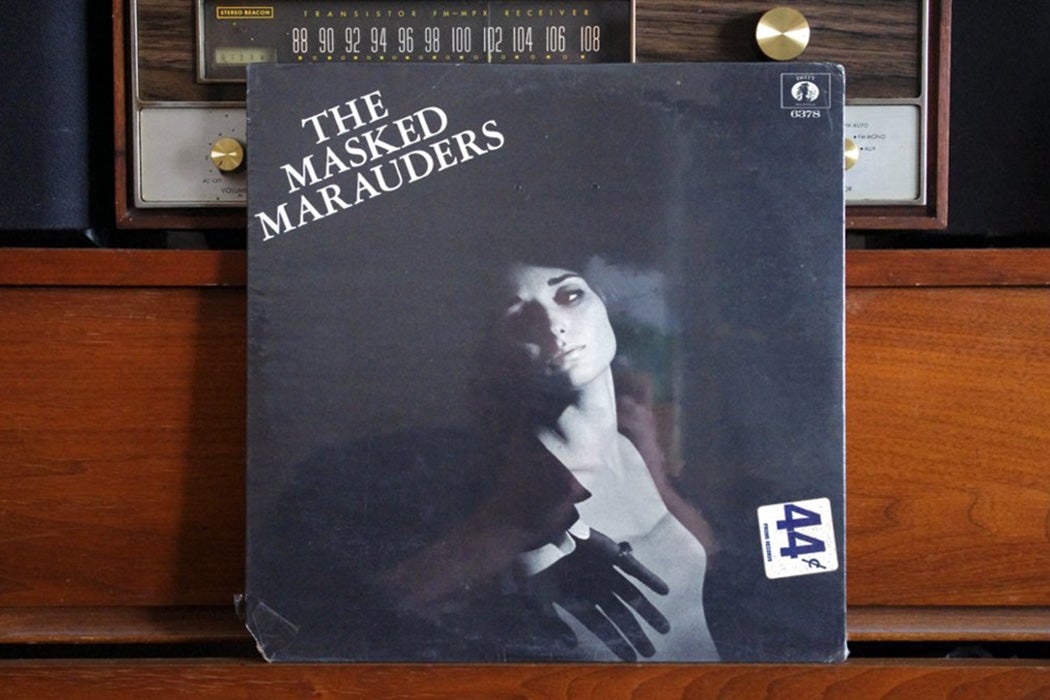“The newest escalation in the never-ending rock hype is an album called The Masked Marauders,” wrote a columnist in a November 1969 issue of the underground newspaper The Seed. So what was all the hype about? The album had been praised in Rolling Stone, with reviewer T.M. Christian writing, “It can truly be said that this album is more than a way of life; it is life.”
The album was supposedly a pseudonymous release by a supergroup with John Lennon, Mick Jagger, Paul McCartney, and Bob Dylan. If you were a fan of a particular kind of rock, this sounded pretty much like a dream come true. But as the Seed writer explains, “it is an attempt at satire.” The whole thing, from review to the actual music, was a hoax created by Rolling Stone writer Greil Marcus, who used the pen name T.M. Christian as nod to Terry Southern’s novel about a prankster, The Magic Christian.
“It was late, I was tired, and I’d been sitting around talking with my friend about how stupid all the then-so-called supersession albums were,” Marcus explained in an exchange included in music writer Joe Bonomo’s collection, Conversations with Greil Marcus. As a joke, Marcus wrote a fake review and showed it to Rolling Stone editor Jann Wenner, who allegedly told him, “We should run lots of fake reviews.”
And so the album that never existed was suddenly big news. The Rolling Stones were even asked in a 1969 interview with the paper Good Times if the story of the album was true. Their response—“[e]xchanged glances and laughter”—probably told the real story. But it wouldn’t have been unusual for music fans to hear about a project like this.
By 1969, there had been releases by supergroups like Blind Faith and Humble Pie, as well as an album called Super Session with Al Kooper, Mike Bloomfield, and Stephen Stills, each of whom had made names for themselves in other groups. As classical rhetoric scholar James Fredal explains, good hoaxes need “rhetorical skill, familiarity with and critical distance from audience beliefs, and a sense of play.” Or as Marcus explained about his exhaustion with supergroups, “it was rounding up famous people to sell junk by name.”
Weekly Newsletter
So what to do when you’ve got an album that everyone wants that doesn’t exist? Time to hire some sound-alikes and get to writing songs. The actual band, as the Seed pointed out, was a Berkeley, California, group called the Cleanliness and Godliness Skiffle Band, who did “fair imitations of Dylan and Jagger.” The album was put out by Warner Brothers in November 1969, sold more than 100,000 copies, and made it to the Billboard charts. And, as the Madison Kaleidoscope reported in its “What’s Going Down” column, the chairman of the Federal Communications Commission called it obscene.
But as Fredal writes, “The successful hoax fools some of the people for a time and most for a while, but it does not fool everyone permanently.” The Masked Marauders were found out early on, as each copy of the record revealed the hoax in the liner notes, with one section all but giving it away: “Leading experts now estimate the music business is currently 90% hype and 10% bullshit. The Masked Marauders, bless their hearts, have gone far beyond that.”
Support JSTOR Daily! Join our new membership program on Patreon today.







